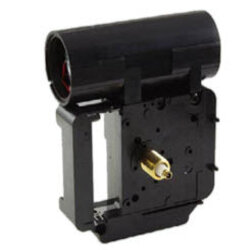
Promptly as well as Chime Clock Movements

Time and chime clock movements are remarkable, fairly modern electronic tools that integrate the prosaic function of telling time with the very old custom of ringing out the hours with bells. Time as well as chime clock movements (or motors), tracking expiring time, setting the hr and min hands to their appropriate placements on a continuing basis, and they additionally use this information to set off chiming series regularly (i.e., per hour and/or quarter-hourly). These devices might also execute particular other functions or novelties, depending upon their developed feature set.
Chime clock movements make use of time, you could state, to perform all the procedures they have actually been configured to satisfy. Nowadays, the motor is not mechanical yet digital, implying that it is much less encumbered with numerous physical parts, such as equipments, pendulums, weights, springtimes, and also escapements. This consequently suggests that they have the capability to work out beyond the abilities of conventional, mechanical watches.
Power is required, from one resource or another, for the electric motor to work; in the mechanical case, hanging weights or curled springtimes apply torque to flywheels to generate rotational force, whereas in the electronic instance, voltage related to quartz crystals generates streams of pulses at a very high as well as exact regularity. The bulk of stuff related to mechanical movements makes them rather limited and also needs them to be reset or rewound on a routine basis. Maintenance becomes troublesome.
The electronic clock motion basically does whatever in software program. Completion outcome is the same, particularly, turning concentric shafts (whereupon are mounted the 2 or 3 hands) into setting respective to the dial as well as its numbers. However as opposed to identifying the proper rotational angles with a network of gears, the pulses from the crystal are counted digitally as well as subdivided consistently to determine said angles.
This streamlining of operations makes it fairly easy and uncomplicated to present more complex timekeeping. As opposed to a 12-hour cycle (twelve o'clock at night and also noon look the same), some movements go a complete 1 day or even much longer (a week or a month) before resetting hand positions. Carrying out such time expansions requires particularly adjusted dials as well as might need an added hand, but the effect has a tendency to captivate viewers.
As for the chime capacities of particular clock movements, modern-day implementations often tend to imitate similar performance discovered in different kinds of clocks (cuckoo clocks, grandpa clocks, and some mantle clocks) going back centuries. The concept is to mimic Big Ben, say, calling the top of the hour each hour. An additional aspect is to play a song with the bells or carillon.
Though the elegant timepieces that chimed might have had actual chimes set up in a cupboard, that is not likely to be the instance today. Modern movements typically manufacture bell-like sounds or play tasted waveforms in melodic sequence. The impact is fairly sensible and convincing.
Most people know with the Westminster and also Winchester songs, and 2 others, Whittington and St. Mary's, are also prominent. You can discover chime movements nowadays that use any type of or all of these choices. Additionally, in many cases you can tape your own song to appear the hr and also replace it for what is supplied by the producer.
A word of warning: chimes sounding every fifteen mins can get frustrating instead quickly, despite just how charming. This is specifically real if the clock is in or near a bed room. We encourage making sure your motion has a switch for silencing the chime or at least disabling it during the night.
There's no doubt that the clockmaker contends their disposal a wide set of tools for developing splendid watches. An excellent way to stun your good friends or family members is by producing clocks based upon time as well as chiming clock movements.